Let's face it, baseball is a funny game. For every Tim Lincecum out there that lives up to his billing, their is a Todd Van Poppel that proves to be a bust in the Major Leagues. That's baseball. Some guys live up to the expectations, others don't.
The Giants aren't immune to that reality either. Sure, a lot of prospects have lived up to expectations. Lincecum won two Cy Youngs. Matt Cain made the NL All-Star team in 2009. Pablo Sandoval SHOULD HAVE made the NL All-Star team in 2009. Brian Wilson proved to be a viable closer in 2009. And Madison Bumgarner and Buster Posey look to take the next step at the Major League level in 2010 after dominating the Minors in 2009.
Yet not all Giants prospects are slam dunks. Here are five guys who came in with a lot of ballyhooed hype, but didn't quite live up to expectations in their tenures in San Francisco.
5. Merkin Valdez, RHP (Acquired by the Giants in 2002 along with Damian Moss for Russ Ortiz).
MLB Stats with SF (Three seasons, 2004, 2008-2009): 3-1 (W-L), 5.24 (ERA), 67 (G), 1 (GS), 67 (IP), 75 (H), 43 (R), 39 (ER), 7 (HR), 38 (BB), 53 (SO), 1.69 (WHIP), 5.1 (BB/9), 7.1 (SO/9), 1.39 (K/BB), 4.67 (FIP).
To be honest, it isn't fun putting Valdez on this list. There were a lot of expectations on this kid when he arrived from Atlanta in the Russ Ortiz trade and he had a lot to offer. He had big size, a rocket arm, and many people envisioned him either to be a.) a surprising starter or b.) a frontline closer for the Giants by 2007 or 2008. Furthermore, him playing for the World Squad in the MLB Futures Game during All-Star weekend for three straight seasons (2003-2005), also made Giants fans hopeful that he was going to live up to all the expectations people were bestowing on him when he arrived in 2002.
The problem with Valdez though is he just couldn't stay healthy. In 2006, he had to get Tommy John surgery and that put him back almost two seasons. When he returned healthy in 2008, he showed some signs of life, perhaps even promise. In 16 innings pitched in 2008 with the Giants, Valdez went 1-0 with a 1.69 ERA, 1.31 WHIP and 7.31 strikeout per nine innings rate.
However, there were some red flags in 2008. Valdez posted a walk rate of 3.94 and a BB/K ratio of 1.86. Furthermore, his 4.01 FIP wasn't exactly too comforting either, especially considering it was over two points higher than his ERA (a .286 BABIP probably had something to do with it).
The warnings from 2008 proved to be real in 2009. Valdez struggled immensely as a reliever for the Giants. His ERA skyrocketed to 5.66, his WHIP also rose to 1.72 and his strikeout rate and BB/K ratio plummeted to 6.93 and 1.36, respectively.
The problem with Valdez? He never could get a good grasp of his control or command (as evidenced by his high walk rate in 2009 and low BB/K ratios in 2008 and 2009), he didn't have any confidence in his secondary pitches (he threw his fastball 80.3 percent of the time in 2009), and he simply didn't perform well in crunch situations. He was pretty much regulated to mop up duty in 2009, and even then, he struggled to preserve leads or lower the damage when the Giants were behind.
With prospects such as Waldis Joaquin and Dan Runzler showing promise in small stints with the Giants in 2009, and with Sergio Romo and Jeremy Affeldt holding firm grasp of late-inning relief work along with closer Brian Wilson, Valdez simply became expendable. Giants general manager Brian Sabean Designated him for Assignment in January and he was picked up by the Toronto Blue Jays less than a week later.
There could still be some hope for Valdez, even though he isn't exactly young anymore (he's 28-years-old). With a fastball that averages 95.5 MPH, Valdez certainly has the stuff to succeed at the Major League level if he ever gets his command and control issues panned out. Unfortunately though, it just didn't happen with the Giants.
4. Lance Niekro, 1B (Drafted by the Giants 61st in the second round of the 2000 MLB Draft)
MLB Stats with SF (Four seasons, 2003, 2005-2007): 195 (G), 499 (AB), 535 (PA), 123 (H), 75 (1B), 26 (2B), 5 (3B), 17 (HR), 61 (R), 79 (RBI), 29 (BB), 91 (SO), .246 (AVG), .288 (OBP), .421 (SLG), .709 (OPS).
Niekro came onto the scene in a big way in 2005. In 113 games during his second stint at the Major League level (he played five games with the Giants in 2003), he hit 12 home runs, drove in 46 RBI, and posted a slugging percentage of .460 and OPS of .755.
In many ways, Niekro pretty much ended Giants fan favorite JT Snow's tenure in San Francisco. After splitting time with Niekro in 2005, Snow was pretty much pushed out by the Giants management in order to make Niekro the full-time first baseman. Snow ended up signing with the Boston Red Sox the following season (where he played only 38 games and eventually retired later that year, though he did come back to play one game in 2008 where he retired as a Giant).
Sure, there were warning signs with Niekro in 2005. He didn't hit well for average (he hit .252 in 2005), he didn't draw walks very well (.295 OBP, 0.32 BB/K ratio) and he struck out a decent amount (19.1 percent in 2005). However, many people expected Niekro's power to carry him and that his plate patience would eventually come around as he gained more experience at first base.
The thing was, his 2005 proved to be an aberration in terms of power.
His home run total fell to five in 2006 with the Giants and his slugging fell back to earth at .387, which resulted in a .673 OPS. To make matters worse, in 2006, his plate patience numbers didn't improve much either. His BB/K ratio improved two points (to 0.34), but his walk rate fell (to 5.2) as did his OBP (to .286).
2007 proved to be the final straw. Though he posted solid (.301 average, .354 OBP, .844 OPS), though curious (only five home runs, a 0.38 BB/K ratio, 22.4 percent strikeout rate) in 47 games in Fresno, Niekro struggled in 11 games with the Giants. He struck out five times, acquired three hits (all singles) and drew only one walk in 18 plate appearances, good for a .176 average, and a very sub-par .399 OPS.
After the 2007 season, the Giants cut ties with Niekro and allowed him to be a free agent, where he signed with the Houston Astros that off-season. Niekro didn't have much impact on the Astros, either. He only hit .212 with a .601 OPS in Triple-A in 2008, and was released in May of that season.
Now, Niekro is trying to break into the Majors with the Atlanta Braves as a knuckleball pitcher like his father, Joe. I guess he doesn't look too bad, huh?
3. Todd Linden, OF (Drafted by the Giants 41st in the first round of the 2001 Draft)
MLB Stats with SF: (Five seasons, 2003-2007): 185 (G), 415 (PA), 373 (AB), 81 (H), 57 (1B), 15 (2B), 2 (3B), 7 (HR), 49 (R), 28 (RBI), 30 (BB), 112 (SO), .217 (AVG.), .288 (OBP), .324 (SLG), .612 (OPS).
Though Linden was a pretty high prospects going into 2003, the hype for Linden didn't really explode until 2004, where he suddenly showed an incredible influx of power in Triple-A Fresno. In 2004, Linden hit 23 home runs, drove in 75 RBI, and posted an OPS of .816.
However, 2005 proved to be even better. In 130 games with the Grizzlies, Linden hit 30 home runs, drove in 80 RBI and posted a crazy 1.120 OPS. Furthermore, he cut down his strikeouts to 97 (he struck out 149 times in 2004), raised his batting average to .321 (he hit .260 in 2004) and raised his OBP to .437 (his OBP was .349 in 2004).
Linden looked to be a can't miss. He had power, he could hit for average, and he could drive in runs. With a lineup that was looking to build around superstar Barry Bonds at the time, Linden looked to be a perfect match: a great hitter that would be also cheap and efficient.
Yet for some reason, Linden never transitioned well to the Major League level.
With the exception of 2004 where he posted a 0.75 BB/K ratio, Linden struck out a lot and struggled to draw walks at the Major League level. Coming off the heels of his of his great years in Fresno in 2004 and 2005, Linden looked lost at the plate in the Major Leagues in 2005. He walked only 5.6 percent of the time and struck out 31.6 percent of the time, good enough for a 0.19 BB/K ratio. Furthermore, the power he showed in Fresno seemed to disappear. He hit only four home runs and posted a slugging percentage of .333, finishing the 2005 season in San Francisco with a .613 OPS.
Linden managed to bounce his way back the following season. In 61 games with the Giants in 2006, he improved his batting average to .273, his OBP to .356, his slugging to .455 and his OPS to .811. Furthermore, his plate patience also got better in 2006 as his walk rate and BB/K ratio rose to 10.1 percent and 0.45, respectively.
Yet for some reason, Linden simply couldn't solve his strikeout problems or regain that home run power he showed in Fresno in 2004 and 2005. His strikeout rate still proved to be high in 2006 at 26 percent and he only hit two home runs in 77 AB.
With his power gone and too much of a liability at the plate because of his high strikeout rates inconsistent walk percentages, 2007 proved to be the last hurrah for him in a Giants uniform. In 55 at-bats, Linden hit only .182, and posted an OBP of .250, a slugging percentage of .200 and an OPS of .450. Furthermore, his walk rate dropped to 8.3 percent and his strikeout rate skyrocketed to 41.3 percent, producing a BB/K ratio of 0.22.
After 30 games, the Giants cut ties with their former first round pick. He somewhat picked himself up in Florida later in 2007, hitting .271 with a .712 OPS with the Marlins. However, he didn't earn a permanent position the following season and bounced around from Oakland to Cleveland to the New York Yankees over the next couple of seasons.
Currently, Linden plays for the Tohoku Rakuten Golden Eagles of the Japanese Pacific League.
2. Tony Torcato, OF (Drafted by the Giants 19th in first round of the 1998 MLB Draft).
MLB Stats with SF (Four seasons, 2002-2005): 43 (G), 47 (AB), 53 (PA), 14 (H), 12 (1B), 2 (2B), 0 (3B), 0 (HR), 2 (R), 3 (RBI), 2 (BB), 8 (SO), .298 (AVG), .346 (OBP), .340 (SLG), .687 (OPS).
Torcato is not so much a story about Major League failure. Rather, it's a story of a guy who probably was drafted too high and simply couldn't handle professional baseball in general, let alone baseball at the Major League level.
The Giants' first-round pick in 1998, there certainly was plenty of hype concerning Torcato. He was young (19-years-old when he was drafted) and he was pretty highly rated by Baseball America when he broke into the league (No. 60 prospect pre-2001; no. 83 prospect pre-2002).
However, Torcato suffered from two things:
1.) Lackluster power numbers.
2.) Struggle to draw walks.
Even in the minors, Torcato never really posted great power numbers. In 1,022 games and 4,133 plate appearances in 10 seasons at the Minor League level, Torcato posted a .401 slugging and only hit 52 home runs. His highest home run total was 13 in 2002 and his highest slugging percentage was .461 in 67 games in San Jose in 2001.
Furthermore, Torcato just never seemed to get that many walks over his minor league career. He posted 41 walks with San Jose in 2000 and that proved to be his career high at any level. Additionally, he posted high OBP numbers of .379 and .381 in San Jose in 2000 and 2001, respectively, but he never even touched those OBP numbers again as he rose through the Giants' system.
And as far as his Major League numbers? Well...it's hard to make any gauge of them because it's such a little sample. (Seriously, 43 games over four seasons?) That being said, two numbers jump out to you:
In 53 plate appearances, zero home runs and two walks.
Those two numbers with the Giants pretty much summed up his career in the Minors.
It is really tough to understand how Torcato didn't succeed. Perhaps he was drafted too high. Perhaps he was in the wrong situation on the wrong team (at the time, Sabean was not very known for player development in the Minor Leagues). Perhaps the fact that he really didn't have a set position hurt him from getting a more serious look (he broke into professional ball as an infielder).
Whatever the reason for his lack of professional success, this much is clear: Torcato didn't live up to expectations and it really is too bad. Considering that he's from the Sacramento-area (where I am from), I certainly was rooting for him to make it.
1. Jesse Foppert, RHP (Drafted by the Giants 74th in the second round of the 2001 MLB Draft).
MLB Stats with SF (Three seasons, 2003-2005): 8-9 (W-L), 5.00 (ERA), 27 (G), 23 (GS), 122.1 (IP), 115 (H), 76 (R), 68 (ER), 18 (HR), 82 (BB), 109 (SO), 1.61 (WHIP), 8.02 (K/9), 6.03 (BB/9), 1.33 (K/BB), 5.27 (FIP).
I know what you are thinking: "How can you say a second-round pick was the biggest let-down of the bunch, especially when Torcato and Linden were first round picks!"
My answer is simple. Foppert was no ordinary second-round pick.
This really was the ideal player to be a Giant, both for the fans and organization. Foppert went to high school in Marin County at San Rafael High. He went to the University of San Francisco, which is located in the heart of the city. When he came to San Francisco, it was the perfect "hometown kid" story. Lastly, Foppert was ranked the fifth-best pitching prospect by Baseball America in 2003.
And yet, despite all those "intangibles" working in Foppert and the Giants' favor, it just never worked out in San Francisco (as evidenced by him signing a minor league deal with Florida this off-season).
Foppert showed promise his first couple of years in the minors. In his first season of professional ball in 2001, he dominated the Northwest League (low Single-A) with the Salem Keizer Volcanoes, going 8-1 with a 1.93 ERA, 0.83 WHIP, an 11.3 strikeout rate, and a 3.83 K/BB ratio.
2002 proved more of the same in Shreveport and Fresno. In Double-A and Triple-A combined, Foppert posted a 3.46 ERA, a 1.22 WHIP, an 11.7 strikeout rate (including a 12.4 rate in Fresno) and a 3.27 K/BB ratio. Granted, his record wasn't impressive at 6-9, but that was about the only fault you could find with Foppert in his 140.1 innings pitched in 2002.
After two solid years in Minor League ball, the Giants deemed Foppert ready for a callup in 2003. That being said, not many of his numbers were all the impressive. He posted a 5.03 FIP and ERA and he had a 5.59 walk rate and a 1.46 K/BB ratio his rookie season.
However, there were some promising numbers: he gave up less hits (103) than innings pitched (111), and he still posed solid strikeout numbers (8.19 strikeout rate, 101 total).
So, even though Foppert struggled in 2003, he showed enough promise his rookie season to help Giants fans and management believe he could be a future starter in the Giants' rotation.
After August 20, 2003 though, the wheels fell off for Foppert.
On that day, he was pulled from a start and was diagnosed with neuritis in his right elbow. He underwent Tommy John surgery in Septmeber of 2003, and was only able to pitch 10 games total in 2004, struggling with his control throughout the 10-game stint (he posted a 4.7 walk rate in nine appearances in the Minors).
In 2005, now recovered from Tommy John, Foppert tried to make a comeback and find a spot in the Giants' rotation. However, he continued to struggle with control since his injury in 2003. While he posted a solid ERA (3.78) and strikeout rate (8.5) in the Minors, his walk rate was high (5.5) and his K/BB ratio proved to be mediocre to boot (1.54).
When Foppert was called up to the Majors in 2005, he just wasn't the same guy Giants fans saw in 2003. He pitched three games, and didn't look good in any of them. Over the three game span, he pitched 10.1 innings and allowed 11 hits, seven runs, six earned runs, 13 walks and only struck out six hitters.
Foppert just wasn't worth it anymore, and in 2006, Foppert was traded along with Yorvit Torrealba to Seattle for Randy Winn.
Foppert did return to the San Francisco Giants' organization in 2008 and pitched 24 games in Fresno in 2008 and in 10 games in Connecticut in 2009. However, he didn't look good at either level, which prompted the Giants to let him loose following the 2009 seasons. In 2008 with the Grizzlies, he posted a 7.62 ERA, a 2.13 WHIP and a 0.65 K/BB ratio. In 2009 with the Defenders, he sported a 6.27 ERA, 2.00 WHIP and a 0.81 K/BB ratio.
Control, control, control. That has just plagued Foppert over his career, especially post-Tommy John in 2003.
The kid who went to high school in Marin County, who pitched for the Dons in downtown San Francisco and was drafted by the Giants.
It should have worked out. Every Giants fan at the time, deep down, wanted it to.
Tuesday, March 2, 2010
Not Quite Giants: Five Prospects Who Didn't Live Up to Expectations
Labels:
Jesse Foppert,
Lance Niekro,
Merkin Valdez,
Prospects,
Todd Linden,
Tony Torcato
Subscribe to:
Post Comments (Atom)




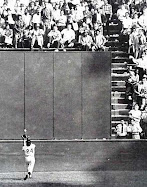
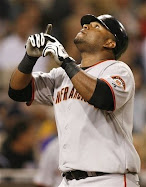
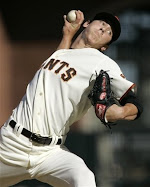
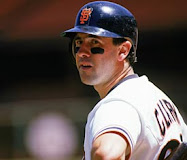
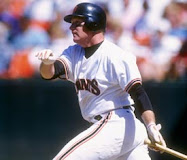
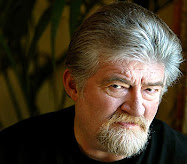

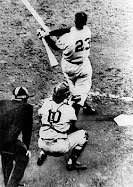
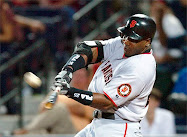
No comments:
Post a Comment